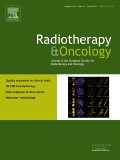
RADIOTHERAPY AND ONCOLOGY
Scope & Guideline
Elevating hematology and oncology with impactful research findings.
Introduction
Aims and Scopes
- Clinical Radiotherapy Techniques:
The journal publishes studies on various radiotherapy techniques, including intensity-modulated radiotherapy (IMRT), stereotactic body radiotherapy (SBRT), and brachytherapy. Research in this area focuses on optimizing treatment plans, improving delivery methods, and assessing patient outcomes. - Radiobiology and Treatment Response:
It covers the biological effects of radiation on cancer cells and surrounding tissues. This includes studies on dose-response relationships, mechanisms of radioresistance, and the role of biomarkers in predicting treatment efficacy. - Technological Innovations in Radiotherapy:
The journal highlights advancements in radiotherapy technology, such as MR-guided therapy, artificial intelligence applications in treatment planning, and the development of new imaging techniques to improve accuracy and precision in radiation delivery. - Quality Assurance and Safety in Radiotherapy:
Research related to quality assurance processes, patient safety protocols, and the implementation of best practices in radiotherapy settings is a significant focus area, aiming to minimize errors and enhance treatment quality. - Patient-Reported Outcomes and Quality of Life:
The journal emphasizes the importance of patient-reported outcomes and quality of life assessments in cancer treatment. It aims to understand the impact of radiotherapy on patients' physical, emotional, and social well-being. - Palliative Care and Symptom Management:
It addresses the role of radiotherapy in palliative care settings, exploring its effectiveness in managing symptoms and improving the quality of life for patients with advanced cancer.
Trending and Emerging
- Artificial Intelligence in Radiotherapy:
There is a significant increase in research exploring the application of artificial intelligence (AI) in various aspects of radiotherapy, including treatment planning, image analysis, and patient-specific quality assurance. AI's potential to enhance precision and efficiency in radiation therapy is a major focus. - Personalized and Adaptive Radiotherapy:
Emerging studies emphasize the need for personalized treatment approaches, including adaptive radiotherapy that adjusts for anatomical changes over the course of treatment, aiming to optimize therapeutic outcomes and minimize toxicity. - Integration of Immunotherapy with Radiotherapy:
Research is increasingly focusing on the synergistic effects of combining immunotherapy with radiotherapy, investigating how these modalities can enhance treatment response and improve patient survival rates. - Longitudinal Patient-Reported Outcomes:
There is a growing emphasis on longitudinal studies assessing patient-reported outcomes (PROs) and quality of life, recognizing the importance of these metrics in evaluating the overall effectiveness of radiotherapy. - Radiomics and Biomarker Development:
The trend towards utilizing radiomics—extracting large amounts of features from medical images—and developing predictive biomarkers for treatment response is gaining momentum, with potential applications in personalized treatment strategies. - Sustainability and Cost-Effectiveness in Radiotherapy:
Emerging research focuses on the sustainability of radiotherapy practices and the economic evaluation of treatment strategies, aiming to balance efficacy with cost-effectiveness in healthcare delivery.
Declining or Waning
- Traditional Radiotherapy Techniques:
There has been a noticeable decline in studies focusing solely on conventional radiotherapy techniques, such as 2D planning and standard fractionation, as newer, more advanced methods gain traction in clinical practice. - Single-Agent Radiotherapy Studies:
Research that investigates the effects of radiotherapy as a standalone treatment has seen a decrease. There is a growing emphasis on combination therapies, particularly integrating radiotherapy with immunotherapy or targeted therapies. - Basic Radiobiological Studies:
While foundational research in radiobiology remains important, there is a shift towards more applied research that directly correlates with clinical outcomes, leading to a reduction in purely theoretical studies. - Generalized Quality Assurance Protocols:
The focus on generalized quality assurance protocols has waned in favor of more specific, customizable approaches tailored to individual patient needs and treatment plans.
Similar Journals

Japanese Journal of Radiology
Exploring Innovations in Imaging and Nuclear MedicineThe Japanese Journal of Radiology, published by SPRINGER, serves as a premier platform for disseminating cutting-edge research and clinical advancements in the fields of radiology, nuclear medicine, and imaging. With an ISSN of 1867-1071 and E-ISSN 1867-108X, this journal has established itself as a vital resource for practitioners, researchers, and students alike. Renowned for its high-quality peer-reviewed articles, it currently enjoys a respectable impact factor within the Q2 category of Scopus rankings, placing it in the 69th percentile among 333 journals in its field. The journal has seen consistent convergence of research from 2009 to 2024, further underscoring its commitment to advancing the understanding of radiological practices. Importantly, the journal offers Open Access options to facilitate widespread dissemination of knowledge, ensuring that vital research reaches its audience without barriers. Addressed in Japan, the Japanese Journal of Radiology plays a critical role in enhancing the global discourse on medical imaging, making it an essential resource for anyone engaged in this dynamic field.

Tumori Journal
Exploring New Frontiers in Cancer Treatment and Research.Tumori Journal is a distinguished publication in the field of oncology, dedicated to advancing the understanding and treatment of cancer since its inception in 1946. Published by SAGE Publications Ltd, this Italian journal serves as a pivotal platform for researchers, clinicians, and academicians to disseminate cutting-edge findings in cancer research and related areas of medicine. With an impressive record of contributions spanning multiple decades, Tumori Journal aims to foster collaboration and dialogue among professionals in the oncology community. Although classified in the Q4 category for Cancer Research and the Q3 category for both Medicine (miscellaneous) and Oncology as of 2023, the journal continues to draw interest with its rigorous peer-review process and commitment to quality. Researchers are encouraged to explore innovative methodologies and share impactful clinical insights through the journal, which also ranks within the top tiers of Scopus metrics for oncology and cancer research domains. With a growing emphasis on accessible research, Tumori Journal remains an essential resource in the continuous fight against cancer.
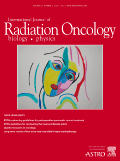
INTERNATIONAL JOURNAL OF RADIATION ONCOLOGY BIOLOGY PHYSICS
Exploring the Nexus of Radiation, Biology, and Oncology.International Journal of Radiation Oncology Biology Physics, published by Elsevier Science Inc, is a premier academic journal that has played a critical role in advancing the field of radiation oncology since its inception in 1975. With an impressive impact factor and recognition as a Q1 journal across multiple categories such as Cancer Research, Oncology, and Radiology, this journal serves as a vital resource for researchers, clinicians, and students dedicated to understanding and improving cancer treatment modalities. Its multifaceted scope encompasses original research, reviews, and innovative clinical studies, fostering a deeper understanding of the interplay between radiation, biology, and oncology. With a remarkable ranking in Scopus, including a top position in Radiation Physics and an elite percentile in Oncology, IJROBP remains at the forefront of scientific discovery and innovation in the management of cancer. A traditional subscription model ensures high-quality, peer-reviewed content, providing invaluable insights that continue to advance the standards of care and research in radiation oncology.
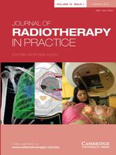
Journal of Radiotherapy in Practice
Empowering Practitioners with Essential Radiotherapy KnowledgeJournal of Radiotherapy in Practice is a peer-reviewed journal published by Cambridge University Press, focusing on the evolving field of radiotherapy and its application in clinical practice. With ISSN 1460-3969 and E-ISSN 1467-1131, this journal serves as a critical platform for researchers, clinicians, and students in oncology and radiology, providing vital insights into treatment methodologies, patient care, and innovative practices. Although indexed in Q4 quartiles for both Oncology and Radiology, Nuclear Medicine and Imaging, the journal plays an essential role in disseminating clinical findings and advancing the science of radiotherapy since its inception in 1999. Authors are encouraged to contribute their research, case studies, and reviews that align with the journal's objectives, fostering a collaborative environment for sharing knowledge. Despite its current rankings, the journal aims to enhance its impact and visibility in the scientific community, thereby enriching professional practice and patient outcomes in the realm of radiotherapy.

ACTA ONCOLOGICA
Shaping the future of cancer treatment and research.ACTA ONCOLOGICA is a prestigious multidisciplinary journal published by Medical Journal Sweden AB, dedicated to advancing cancer research and clinical practice. As a key resource in the field of oncology, the journal aims to publish high-quality articles that cover significant developments in cancer biology, treatment modalities, and innovative imaging techniques. With an ISSN of 0284-186X and an E-ISSN of 1651-226X, ACTA ONCOLOGICA operates in the United Kingdom and is recognized for its substantial impact, currently holding a Q2 ranking in the categories of Hematology, Medicine (miscellaneous), Oncology, and Radiology, Nuclear Medicine and Imaging in 2023. The journal’s commitment to disseminating pivotal research is reflected in its inclusion in Scopus, with rankings placing it in the top half of its fields. Though it does not currently offer Open Access, it remains an essential resource for researchers, healthcare professionals, and students seeking to stay informed on the latest trends and findings in oncology. Established in 1963, the journal continues to be a cornerstone of cancer research well into 2024.
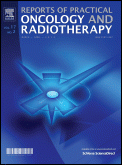
Reports of Practical Oncology and Radiotherapy
Transforming cancer treatment with collaborative knowledge.Reports of Practical Oncology and Radiotherapy is a distinguished open-access journal dedicated to advancing the fields of oncology, radiotherapy, and cancer research. Published by VIA MEDICA since 2001, this journal serves as a critical platform for disseminating innovative research and practical findings that impact clinical practices and patient outcomes. With an emphasis on fostering collaboration and knowledge exchange among researchers, clinicians, and students, the journal has positioned itself within the Q3 and Q4 categories of renowned directories in oncology, radiology, and nuclear medicine as of 2023. Based in Gdansk, Poland, it provides unrestricted access to its articles, ensuring that crucial research reaches a wide audience. This dedication to open access reflects the journal's commitment to transparency and innovation in the fight against cancer, making it an invaluable resource in this vital field of study.

Radiological Physics and Technology
Advancing knowledge in radiological science.Radiological Physics and Technology, published by SPRINGER JAPAN KK, is a prominent journal that serves as a crucial resource in the multidisciplinary fields of medicine and radiation sciences. With an ISSN of 1865-0333 and an E-ISSN of 1865-0341, the journal has been converging impactful research from 2008 to 2024. It holds a commendable position in academic rankings, currently classified in Q2 in Physical Therapy, Sports Therapy and Rehabilitation and Radiation, along with Q3 for Medicine (miscellaneous) and Radiology, Nuclear Medicine and Imaging. The journal is well-regarded in the academic community, reflected in its Scopus rankings that place it in the upper tiers of its respective categories. Although it currently does not offer Open Access, Radiological Physics and Technology remains a pivotal publication for researchers, academics, and practitioners seeking to advance knowledge and foster innovation in radiological science. Its commitment to disseminating high-quality research ensures its continued relevance and importance within these fields.
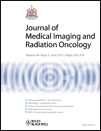
Journal of Medical Imaging and Radiation Oncology
Fostering Innovation in Imaging for Enhanced Cancer CareJournal of Medical Imaging and Radiation Oncology, published by WILEY, is a pivotal resource in the fields of oncology and medical imaging. With an impact factor reflective of its commitment to advancing research, the journal has maintained a robust reputation since its inception in 2008 and continues to thrive through 2024. It is indexed with an insightful ranking, with a Q2 classification in Radiology, Nuclear Medicine and Imaging, affirming its importance in these disciplines. This journal not only serves as an open access platform, allowing extensive reach and accessibility, but also fosters a scholarly community dedicated to the innovation of imaging techniques and radiation oncology practices. As a key player in disseminating crucial findings and advancements, it appeals to researchers, clinicians, and students who aim to contribute to the evolving landscape of medical imaging and cancer treatment methodologies. The journal is based in Australia, at 111 River St, Hoboken, NJ, and invites submissions that push the boundaries of current knowledge in this critical area of healthcare.

Radiation Oncology Journal
Elevating the standards of radiotherapy in oncology.Radiation Oncology Journal, published by the Korean Society of Therapeutic Radiology & Oncology, stands at the forefront of cancer treatment research and innovation within the dynamic fields of oncology and radiology. With a focus on disseminating groundbreaking findings and advancements from 2012 to 2024, this journal aims to foster collaboration among researchers, clinicians, and educators dedicated to improving therapeutic techniques and patient outcomes in the context of radiation therapy. Recognized with a prestigious Q2 ranking in both the Oncology and Radiology, Nuclear Medicine and Imaging categories, it ranks 140th out of 333 in its Scopus category for Medicine Radiology and boasts a 58th percentile placement. While operating on a non-open access basis, the journal remains committed to providing valuable insights and updates to professionals in the field from its base in South Korea. As the landscape of cancer treatment evolves, the Radiation Oncology Journal continues to play a vital role in shaping research trends and enhancing the understanding of radiotherapy's role in comprehensive cancer care.
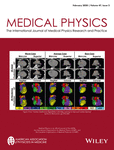
MEDICAL PHYSICS
Exploring Innovations in Medical Imaging and TreatmentMEDICAL PHYSICS, published by WILEY, stands as a leading journal in the fields of biophysics, medicine, and radiology, boasting an impressive impact factor and classified within the prestigious Q1 category across multiple relevant domains. With its ISSN 0094-2405 and E-ISSN 2473-4209, the journal has been a vital resource since its inception in 1974, leading the discourse well into 2024. Hailing from the United States, MEDICAL PHYSICS serves a diverse academic audience, comprising researchers, clinicians, and students eager to engage with the latest advancements and methodologies. The journal’s authoritative presence is underscored by its Scopus rankings, placing it among the top percentile in both Medicine and Biophysics, marking it as an essential scholarly platform for innovative research and critical reviews. While not currently an Open Access journal, its commitment to curating high-quality articles ensures that readers can access groundbreaking insights into medical imaging, treatment protocols, and the theoretical underpinnings of medical physics. Explore the intersection of technology and healthcare through the esteemed pages of MEDICAL PHYSICS.